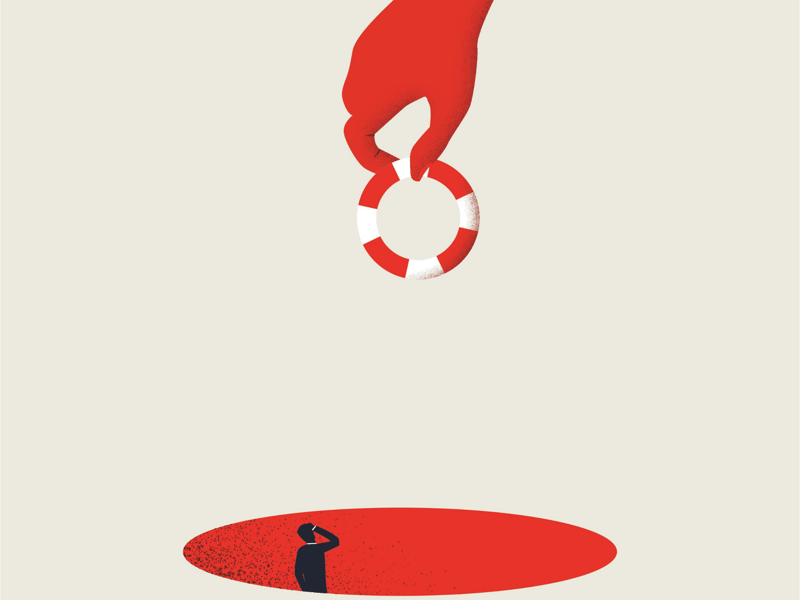
Throughout the pandemic, the name of the game for many companies was survival. It was simply about getting through to the other side, and in most cases, that meant a considerable cost focus strategy. However, post-pandemic, we're getting our heads back in gear. Businesses don't just want to survive; they want to thrive, and the key to that is a customer focus.
Regaining confidence post-pandemic
Many businesses that survived the pandemic did so because their CEOs and business leaders clearly understood. The situation sharpened their thinking in many ways, resulting in a better cost focus than ever before.
However, as everything has started to switch on again, the relentless cost focus isn't necessary for survival. If you've made it this far in the pandemic, then you are more than likely over that particular hurdle. Instead, the focus needs to shift towards thriving in a world that's moving forward. That doesn't mean not having a clear cost focus, and it certainly doesn't mean letting costs run away from you, which they can easily do.
However, it does mean having less of a myopic view of your business. Cost focus might have helped you hunker down, but it won't help you grow, so alongside it should now be a prominent customer focus as well.
The role of cost focus
You don't need us to tell you that a strategic and controlled approach to cost is essential and bringing customer focus front and centre doesn't change that. Keeping overheads down or under control is always crucial. As businesses grow, it can be too easy for unnecessary costs to run away from you.
When I was working in banking, the Chairman of one particular institution approved every expense. If you needed new hardware, he signed on the dotted line. That was probably a bit extreme, but he knew from previous experience how quickly costs could go awry, and he was vigilant. It was also a very successful, customer-driven organisation with record profits. It's not specifically about keeping overheads down but about being intentional about the situation that you're in.
Why is customer focus important?
Customer focus needs to run through your business organically, making it either easy or difficult to achieve, depending on your company culture. It's also something that most companies need to work at to maintain as they grow. That culture stems from the Chief Executive Officer and the senior leadership team.
Customer centricity is essential because:
- It's the reason for your business's existence.
- It's the reason your customers came to you in the first place.
- It's the foundation for customer loyalty.
As you grow, maintaining that focus will also help channel your ideas about how your product and/or service will evolve, whether it's responding to customer wants and needs or anticipating new ones.
In the words of Steve Jobs, the ultimate anticipator of consumer desires:
"You've got to start with the customer experience and work back toward the technology – not the other way around."
This is where customer focus becomes game-changing, and in a world of constant innovation and industry disruptors, you need to be prepared to change the game.
How can you create a more customer-focused mindset?
Typically, when a company starts, they have a clear idea of their purpose and deliver it to the customer. That tends to be particularly true of small teams of business leaders all working together, with a vested interest in the outcomes and where they are all very close to the sales pipeline.
As a business grows and takes on more areas of specific expertise, often those experts become siloed. They become focused on their particular job and lose touch with the bigger picture - serving the customer.
Customer focus starts with leadership
Some companies try to create a customer-focused mindset by appointing a Chief Customer Officer (or similarly titled individual). It's one way to go, but to our minds, it is futile because it still has the effect of placing responsibility for customer focus on one individual. Instead, customer focus has to be organic. If a business is to grow, all C-suite leaders (CEO, COO, CFO, CMO, CTO) must bring all their decisions back to customer focus.
Changing company culture
Developing customer insights
The other thing to think about is what 'customer focus' really means. For many companies, customer-centricity is reactive - making changes to existing solutions in response to complaints or issues. However, that's just making customers focus on a hygiene factor rather than a business driver.
Game-changing customer-centricity is about truly understanding your customer priorities, and customer insights drive that. That might be the result of listening to your customers or the result of something you have fed to them. Once again deferring to Mr Jobs:
"It's really hard to design products by focus groups. A lot of times, people don't know what they want until you show it to them."
The point is that when you understand your customers (and non-customers) know what they're looking for and what's driving them, that's when you achieve radical change, strengthen (or develop) your value proposition and take your business to new heights.




